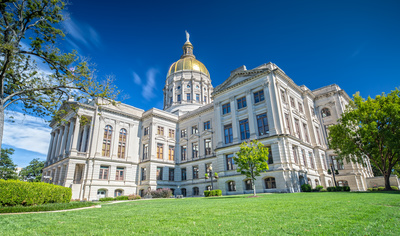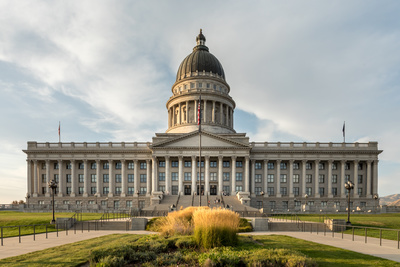
Elections & Campaigns, Energy & Environment
Nine States Face Key Public Utility Commission Elections Ahead of 2026
October 27, 2025 | Billy Culleton
April 1, 2021 | Billy Culleton

Key Takeaways:
Despite the pandemic-induced shutdowns causing severe disruption in global energy markets last year, several state lawmakers have doubled down on their commitment to making renewables a larger part of their energy mix. In February, Delaware Governor John Carney (D) signed legislation (DE SB 33) that raises the share of renewable energy that public utilities are required to sell to 40 percent by 2035. Last April, during the height of COVID-19 lockdowns, Virginia became the ninth state to set a 100 percent renewable target by 2040 (for its largest public utility) with the enactment of the Clean Economy Act (VA SB 851 & VA HB 1526). Virginia’s action followed recent moves in Maine, New York, and Washington, D.C., to raise renewable portfolio standards that target zero-carbon or a 100% renewable electricity makeup.
Renewable portfolio standards (RPS) play a key role in how state and local governments promote clean energy by requiring a specified percentage of public utility’s power generation to come from renewable resources. In 1983, Iowa became the first state to enact an RPS, requiring the state’s two main public utilities to purchase 105 megawatts (MW) of electricity from renewable projects. Since then, thirty states plus D.C. have enacted binding renewable portfolio standards for their public electric utilities while seven states have enacted voluntary renewable targets for public utilities to target.

Many businesses, who have made similar pledges to transition to renewables, have welcomed renewable standards from the state. Nearly half of the companies on the Fortune 500 list committed to use 100% renewable energy in their operation by a certain date or implement energy efficiency programs. And recently, BlackRock CEO Larry Fink made headlines in a written letter to business leaders urging them to confront climate change head-on by moving investment away from fossil fuels.
In addition to the environmental concerns, companies are drawn to renewables for their cost savings. According to data published by the International Renewable Energy Agency, between 2010 and 2019, the cost of solar photovoltaics (PV) fell over 82 percent while onshore and offshore wind prices fell by 40 percent and 29 percent, respectfully. Retailers have used rooftop solar panels on their stores to cut down their electricity bills and tech companies are making the availability of renewables a key part of siting decisions for their ever-expanding data centers.
Most state renewable standards hold public electric utilities accountable for percentage goals in multi-year increments. For example, New Mexico’s RPS says that renewables must make up 40 percent of electricity sold by public utilities by 2025, 80 percent by 2040 and 100 percent by 2045. And in seven states, the standards are simply non-binding goals for utilities to target.
Clean energy advocates along with state lawmaker allies have pushed a 100 percent renewable as the latest RPS goal. Hawaii became the first state in 2015 to set the RPS bar at 100 percent and since then, eight states and over 200 cities have followed suit. And the Biden Administration has pledged to establish a federal RPS requiring all public utilities move to 100 percent clean electricity by 2035.
As businesses look to procure more renewable energy in the years to come, RPS targets are a competitive tool for states to attract new development over the coming decades. Companies who made commitments to “going green” are looking at which states are on track to fulfill their energy needs. Regardless of whether a state has an RPS, corporate demand for renewable energy will likely force states to consider how best to incorporate renewables into their long-term energy mix, which could happen sooner than you may think.

October 27, 2025 | Billy Culleton

August 13, 2025 | Bill Kramer

July 8, 2025 | David Shonerd